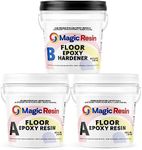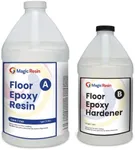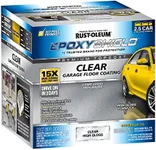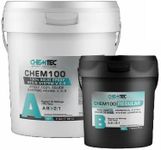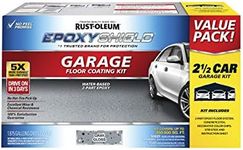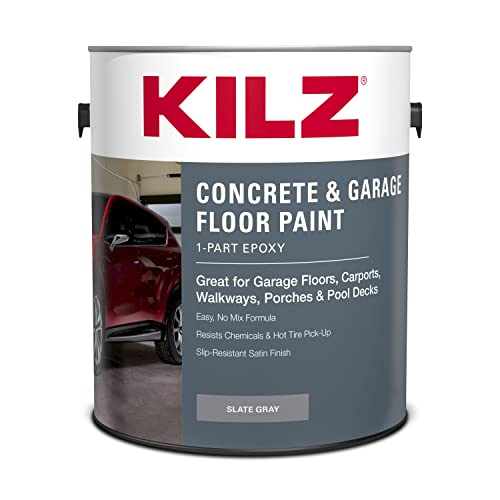Buying Guide for the Best Garage Epoxy Kit
Choosing the right garage epoxy kit can make a big difference in how your garage floor looks and performs over time. Epoxy kits are used to coat concrete floors, making them more durable, resistant to stains, and easier to clean. When shopping for a kit, it's important to consider the size of your garage, the type of use your floor will see, and how much time and effort you're willing to put into the application process. Understanding the key specifications will help you pick a kit that matches your needs and ensures a long-lasting, attractive finish.Epoxy TypeEpoxy kits generally come in two main types: water-based and solvent-based. Water-based epoxies are easier to apply, have less odor, and are safer for indoor use, making them a good choice for most homeowners. Solvent-based epoxies are more durable and chemical-resistant but require more ventilation and careful handling. If your garage sees heavy use, like frequent car repairs or chemical spills, a solvent-based option might be better. For typical home garages, water-based is usually sufficient and more user-friendly.
Number of ComponentsEpoxy kits can be single-part or two-part systems. Single-part (sometimes called 'one-part') epoxies are easier to use because you don't have to mix anything, but they tend to be less durable. Two-part systems require mixing a resin and a hardener, which creates a stronger, longer-lasting finish. If you want a professional-looking, tough floor that will last for years, a two-part system is the way to go. If you prefer a quick and simple application and don't mind reapplying sooner, a single-part kit may be enough.
Coverage AreaCoverage area tells you how much floor space the kit will cover, usually measured in square feet. This is important because you want to make sure you buy enough product for your entire garage. Kits are often labeled for one-car, two-car, or three-car garages, but it's best to measure your space and compare it to the kit's stated coverage. If your floor is rough or porous, you may need more epoxy than the kit suggests. Always plan for a little extra to ensure full, even coverage.
Finish and Color OptionsEpoxy kits come in a variety of finishes, such as gloss, semi-gloss, or matte, and a range of colors. Some kits also include decorative flakes or chips that you can sprinkle on for a textured, speckled look. The finish affects how much light reflects off the floor and how easy it is to clean. Glossy finishes are bright and easy to wipe down, while matte finishes hide dirt better. Choose a color and finish that matches your style and the way you use your garage. If you want to hide stains or tire marks, a speckled or darker color is a good choice.
Drying and Curing TimeDrying time is how long it takes for the epoxy to be touch-dry, while curing time is how long before you can park a car or place heavy items on it. Some kits dry in a few hours but need several days to fully cure. If you need to use your garage quickly, look for a kit with a shorter curing time. However, faster-curing products may be harder to work with because they set quickly, so make sure you can apply the product within the recommended time.
Slip ResistanceEpoxy floors can be slippery, especially when wet. Some kits include additives or textured flakes to improve grip. If your garage is likely to get wet or you want extra safety, look for a kit that offers slip-resistant options. This is especially important if you have kids, pets, or plan to use the garage as a workshop.
Chemical and Stain ResistanceOne of the main benefits of epoxy is its resistance to chemicals, oil, and stains. Some kits are formulated to be more resistant than others. If you expect to spill oil, gasoline, or other chemicals, make sure the kit you choose specifically mentions high chemical resistance. This will help keep your floor looking good and make cleaning up spills much easier.
